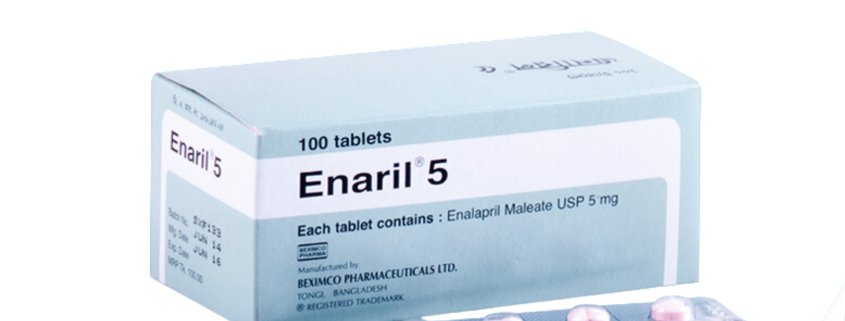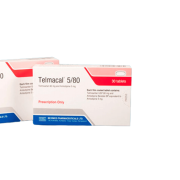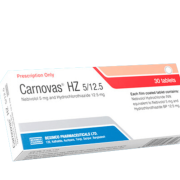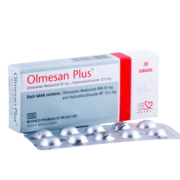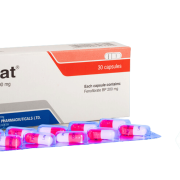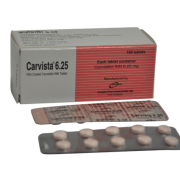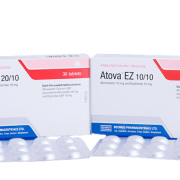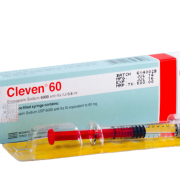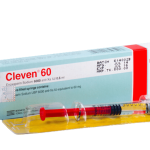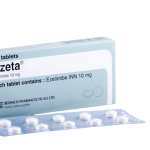Enaril
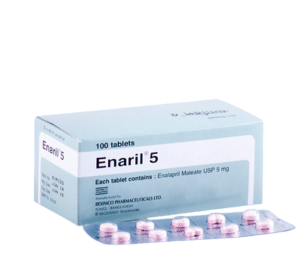
Generic Name: Enalapril
Dosage Form: Tablet
TG Name: Cardiovascular
1. What is and what it is used for?
Enaril (Enalapril Maleate) is the maleate salt of enalapril, the ethyl ester of a long-acting angiotensin converting enzyme inhibitor, enalaprilat. It is highly effective in the management of hypertension and heart failure. Enaril is available as 5 mg tablet for oral administration. Enaril is indicated for the treatment of all grades of essential hypertension, renovascular hypertension and heart failure.
2. Before you take Enaril
Do not take this medicine and tell your doctor if:
Enalapril is contraindicated in patients who are hypersensitive to any component of this product and in patients with a history of angioneurotic oedema relating to previous treatment with an ACE inhibitor.Do not take this medicine if the above applies to you. If you are not sure, talk to your doctor before taking Dilapress.
Take special care with Enaril
Hypotension: Symptomatic hypotension has been reported mainly in patients with severe heart failure. In these patients, by discontinuing diuretic therapy or significantly reducing the diuretic dose for two to three days prior to initiating Enalapril, the possibility of this occurrence is reduced. By initiating therapy with a small dose (2.5 mg), the duration of any hypotensive effect may be lessened.
If hypotension develops, the patient should be placed in a supine position. Volume repletion with oral fluids or intravenous normal saline may be required.
Impaired renal function: Enalapril should be used with caution in patients with renal insufficiency as they may require reduced or less frequent doses. Renal failure has been reported in association with Enalapril and has been mainly in patients with severe congestive heart failure or underlying renal disease, including renal artery stenosis. If recognized promptly and treated appropriately, renal failure is usually reversible.
Cough: Cough has been reported with the use of ACE inhibitors.
Surgery/Anesthesia: In patients undergoing major surgery or during anesthesia with agents that produce hypotension, Enalapril blocks angiotensin II formation secondary to compensatory renin release.This may lead to hypotension which can be corrected by volume expansion.
Taking other medicines
Combination with other antihypertensive agents such as beta-blockers, methyldopa, calcium antagonists and diuretics may increase the antihypertensive efficacy. Adrenergic-blocking drugs should only be combined with Enalapril under careful supervision. Concomitant propranolol may reduce the bioavailability of Enalapril, but this does not appear to be of any clinical significance. Concomitant therapy with lithium may increase the serum lithium concentration.
Pregnancy and breast-feeding
Enalapril is contraindicated in pregnancy and treatment should be stopped if pregnancy is suspected, because it has been shown to be foetotoxic in rabbits. : Enalapril and Enalaprilat are excreted in breast milk ; caution should be exercised if Enalapril is given to lactating mothers.
3. How to take Enaril?
Essential and Renovascular Hypertension : Treatment should be initiated with 5 mg once a day. Where concomitant therapy is a diuretic, the recommended initial dose of Enaril is 2.5 mg. The dose should be titrated to give optimum control of blood pressure. The usual maintenance dose is 10-20 mg given once daily. In severe hypertension, the dosage may be increased incrementally to a maximum of 40 mg once daily.
Heart failure : Enaril can be used as an adjunctive therapy with non-potassium-sparing diuretics and / or digitalis. The recommended starting dose of Enaril is 2.5 mg once daily. The dose of Enaril should be gradually increased depending upon tolerability to the recommended maintenance dose (10-20 mg) given as a single or twice daily dose.
If you take more Enaril than you should
Limited data are available for overdosage in humans. The most prominent feature of overdosage is hypotension, for which the usual treatment would be intravenous infusion of normal saline solution. Enalapril can be removed from the general circulation by haemodialysis.
If you forget to take Enaril
If you forget to take a dose, take it as soon as you remember it. However, if it is nearly time for the next dose, skip the missed dose. Do not take a double dose to make up for a forgotten dose.
If you stop taking Enaril
Do not stop taking this medicine without talking to your doctor. You should not stop taking Enaril just because you feel better. This is because the problem may come back or get worse again.
If you have any further questions on the use of this product, ask your doctor or pharmacist.
4. Possible side effects
Like all medicines, Enaril can cause side effects, although not everybody gets them.
The commonly reported side effects are dizziness and headache. Other side effects occurring less frequently include orthostatic hypotension, nausea, rash, cough etc.
Cardiovascular: Myocardial infarction or cerebrovascular accident, possibly secondary to severe hypotension in high-risk patients. Palpitation, rhythm disturbances.
Gastro-intestinal: Abdominal pain, dyspepsia, hepatitis, jaundice
Nervous system: Confusion, nervousness, insomnia, somnolence
Respiratory: Sore throat, hoarseness of voice
Skin: Urticaria, pruritus
Special senses: Blurred vision
Renal: Oliguria, renal dysfunction, renal failure are reported in rare cases.
Tell your doctor if any of the side effects gets serious or lasts longer than a few days, or if you notice any side effects not listed in this leaflet
5. How to store Enaril?
Store in a dry place below 25° C, protected from light.

